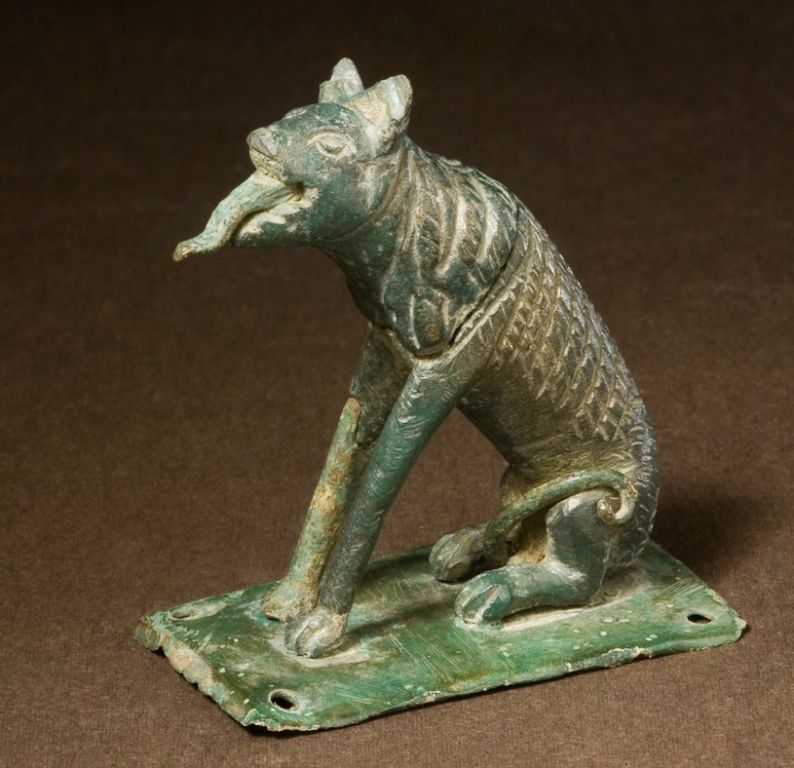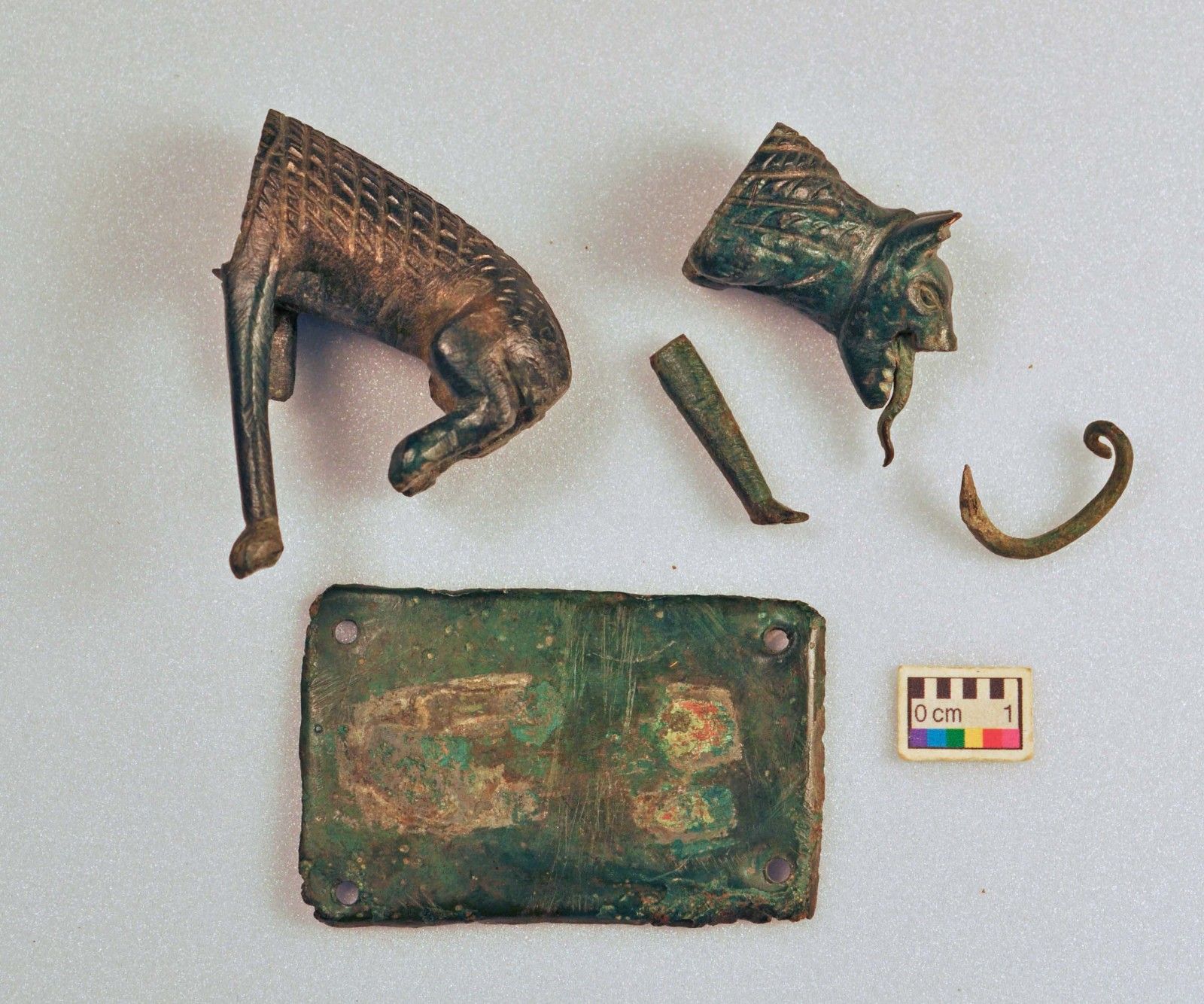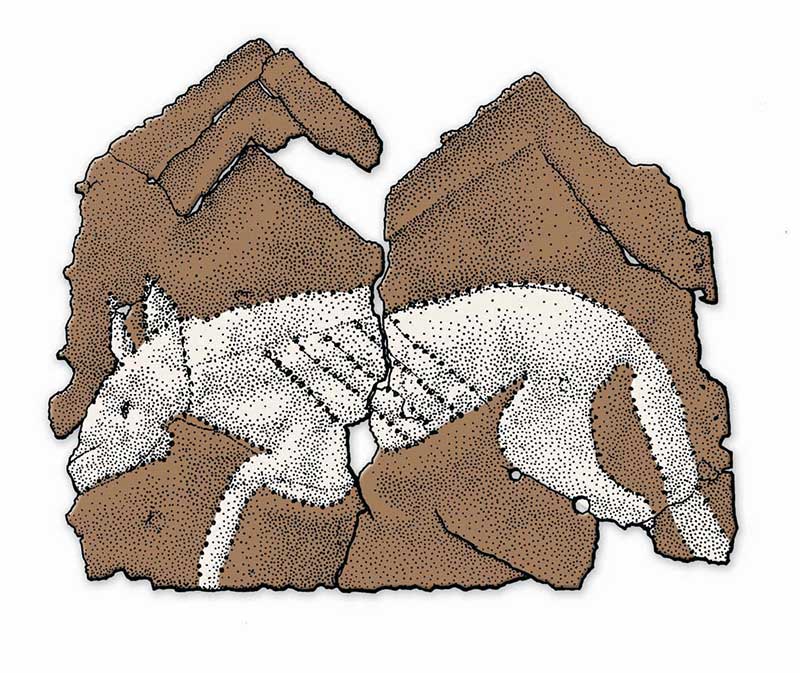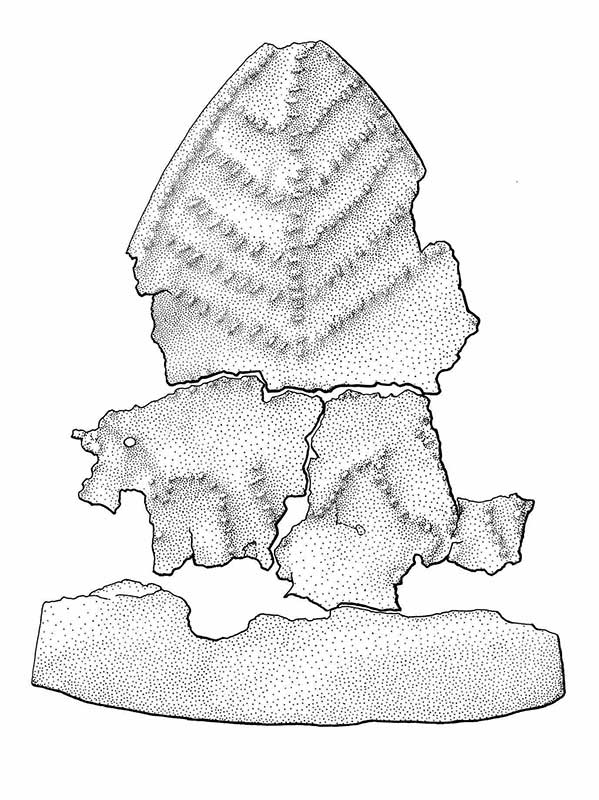The Healing Power of Dogs

This detailed miniature statue of a dog is no more than 4 to 5cms in height, and was probably once coated in tin or silver. Holes in the metal base plate suggest he was attached to a small plinth.

One of two miniature statues of dogs found at Llys Awel. His tongue is sticking out in the action of licking.
Man’s best friend, the dog has recently been making headlines again through his ability to save life by either sniffing out cancer or licking to help restore circulation to injured limbs. This association between people, dogs and good health is nothing new and was recognised back in antiquity.
Housed in the Archaeology collections are 2 small dog figurines, part of a group of objects found at Llys Awel, Conwy. There are also two copper alloy plaques. One is decorated with a dot-punched outline of a dog; the second is not so well preserved, the dotted outline is less clear and it could either be another dog or a name, possibly of a god. The site is believed to be a shrine dedicated to a healing god and the objects themselves date to the Roman period in Britain, sometime between the late first century AD and the end of the fourth century AD. The objects were probably left by people as gifts to the god hoping they would be granted good health and help to recover from an illness.
Why dogs?
Well, the Greek god of medicine, Asklepios (adopted by the Romans who knew him as Aesculapius), was frequently depicted with a dog as his animal companion. This association probably came about after people observed dogs healing themselves by licking. A major sanctuary to his cult was built in the fourth century BC at Epidaurus, in Greece. This place became one of the major centres for healing in the ancient world. One part of the healing treatment or ritual was to receive licks from a sacred dog kept at the sanctuary. The only known British equivalent of Epidaurus is the cult centre of the Romano-British god Nodens at Lydney in Gloucestershire. Here, 9 representations of dogs were found: like the dogs at Llys Awel these were probably left by visitors seeking cures for their ailments.
The dogs are made from copper alloy and are about 5cm tall. They are seated with tails between their legs and tongues sticking out, as if in the action of licking. The figures are incredibly detailed with eyes, ears, nose, paws and fur texture well defined. They were probably made by the lost wax process, so there was only one chance to get the metal casting right. One dog was cast as a single piece, but the other revealed a slightly more complicated construction.

During conservation we can find out how the statue was made. Different pieces appear to have been cast separately and soldered together.

Illustration of a votive plaque with added shading to highlight the outline of a dog.

Illustration of votive leaf plaque. Do the dotted lines in the lower half spell out the name of a long lost god or is it another dog?
Conservation
During conservation it became apparent the dog was cast in several sections, the head, body, tail and tongue. The individual pieces were then soldered together to create the whole figure. Grooves in the metal at the junction between the head and body support this idea and would have helped the solder grip and hold the two sections together. There is evidence to suggest the craftsman had problems casting the figure, the molten copper alloy failing to flow to all parts of the tiny mould. Repairs had to be made to the nose and the right front leg, the miscast material removed and then new sections recast and soldered in place. The replacement nose has gone, but we still have the replacement leg, which is not as well modelled as the original left leg.
The statue was probably given a coat of either tin or silver to hide the construction detail and enhance its appearance, which would have helped elevate our dog to a slightly higher pedigree. Unfortunately analysis of the surface was inconclusive; the coating, if one had existed, did not survive. Therefore we can only imagine its original appearance and wonder if the people who gave this little treasure to the god were ever granted their wish.
Comments - (4)
My new Boxer is now 1 yr and 2 months old. He goes to a day care for animals. They have some children there also. One day I went to pick him up and they told me that he was very interested in the new litter of kittens that their cat just had. They said he would watch them by putting his head over the side of the bed where the mother was nursing them. I asked them if the mother cat let him do this and they said it didn't seem to bother her. A week or so went by and I asked how the he was doing in regards to the kittens, they told me that he would wait until the mother cat would leave and then he would go over to the kittens and nudge all the kittens away from this one and then he would gently pick it up and take it to the center of the room and start licking it and when he was finished he would take it back. I asked what the mother cat did while he did this and they said nothing, she let him do what he wanted.
Another incident - I am a suffer of migraines and one weekend I ended up having a migraine and had ran out of medicine. I was in bad shape. I got out of bed and went in and laid on the sofa. My dog came in and nudged me to move and let me let him lay next to me. He is a big dog, and he started to lick my face and mouth and was as sweet as could be. Before I knew it I know longer had a migraine. I could not believe it. I got up and we had a great day!